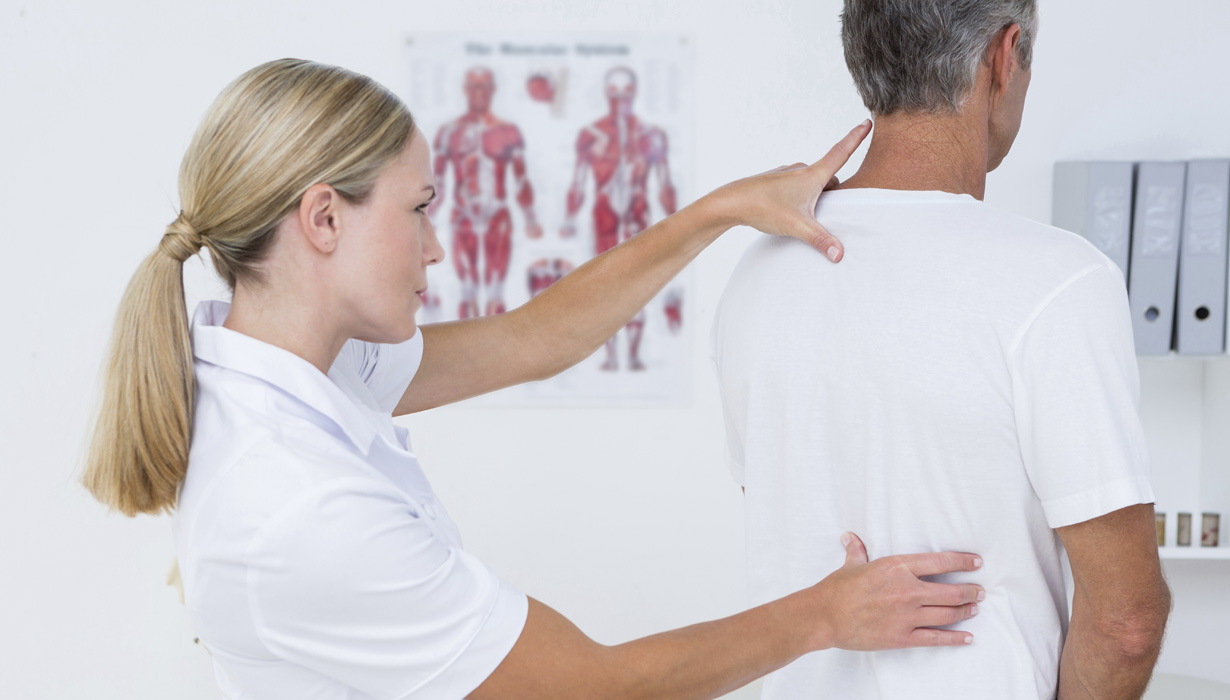
Back & Neck Pain
Tailored treatments for your disc prolapse, facet strain, sacroiliac strain, sciatica, scoliosis and whiplash.
Over 85% of the population will likely suffer from back or neck pain at some stage of their life. Determining the cause of your lower back pain is important. You will receive tailored treatment solutions to treat and then prevent further episodes of lower back pain. Our approach will target joint proprioception, restore normal joint movement, encourage blood flow and alleviate nerve compression or the “pinched nerve” feeling.
Non-specific mechanical back/neck pain
Spinal joints that do not move correctly can develop pain. Spinal joint receptors may cause abnormal signals to be sent to the central nervous system which can cause muscles to become tense and overactive or flaccid and under reactive. Trigger points can develop in the muscle.
Disc prolapse
Discs are the soft but strong cushions that separate the vertebrae in your spine and absorb shock as you move. Repeated strain over time, or sudden injuries can damage discs and irritate nerves, causing pain, weakness, numbness, or tingling in your back, legs, neck or arms. Spinal discs have very poor blood supply and they depend upon the circulation of joint fluids to bring nutrients and expel waste. If a spinal joint loses its normal motion and this pumping action is impaired, the health of the disc deteriorates. Like a wet sponge a healthy disc is flexible. A dry sponge is hard, stiff, and can crack easily. This is how many disc problems begin. Through trauma to the spine or wear and tear, discs can bulge, herniate or rupture. This can be painful, putting pressure on the spinal cord and nerve roots, interfering with their function. Our clinics have specialised lumbar Flexion Distraction tables which help reduce disc bulging, alleviate symptoms and may prevent the need for surgery.
Facet strain
A facet strain occurs when the connective tissue or cartilage surrounding the joint becomes damaged or tears. The most common cause is overuse injury from bending and lifting. Symptoms may include low back pain, muscle pain, muscle tension and pain on rotation or extension. Chiropractic techniques can reduce this joint restriction and restore normal movement.
Sacroiliac strain
Sacroiliac pain from inflammation of the joint or capsule is usually worse with standing or walking and improved with lying down. Pain can be referred into the groin and back of the hips. Restriction in the pelvis is common. Chiropractic manipulation can reduce and realign this restriction.
Sciatica
Sciatica describes symptoms down the leg which can go into the calf and foot. This may be numbness, sharp shooting pain, pins and needles and weakness such as “foot drop”. This can be caused by compressed nerves caused by a lumbar disc prolapse or osteophytic spur growths on the vertebrae. A diagnosis endeavours to establish the cause of sciatica and chiropractic techniques may relieve the condition.
Scoliosis
Scoliosis is a sideways curving of the spine that often gets started in childhood, when the bones of the spine are still growing. In many cases, the exact cause of scoliosis is unknown. Scoliosis can be detected by uneven shoulder heights, a loss of structural balance, or a change in posture or by X-Ray. It is thought scoliosis is a result of a hereditary problem or an adaptation to some type of trauma. Because bones continue to grow well into the early 20’s scoliosis can worsen. Early detection and chiropractic correction is important for optimum results.
Whiplash
Injuries to the neck caused by sudden movement of the head, backward, forward, or sideways, is referred to as “whiplash” The head can move beyond its normal limits and the discs, muscles and ligaments supporting the spine and head can be overstretched or torn, or bulge. The spinal cord and nerve roots in the neck can get stretched and irritated. The resulting instability of the spine and soft tissues can result in headaches, dizziness, blurred vision, pain in the shoulder arms or hands and reduced range of movement in the spine. Early chiropractic intervention can help restore proper spinal movement and reduce inflammation and scar tissue.
Lumbar instability (retrolithesis or anterolithesis)
Neuromuscular control of the spinal segments is maintained by a combination of the structural (passive) system, muscular (active) system, and the neural control system. Any disruption in these systems may lead to lack of segmental control and instability. Feelings of spinal pain, muscular spasm and guarded movements may be experienced. Chiropractic care aims to reduce pain, enhance joint awareness (neural stability) and relieve muscular tension. Exercises can be prescribed to improve core stability and strength.
Central stenosis
Central stenosis is narrowing of the central canal of the spinal column. This can cause lower back pain, sciatica, claudication or leg pain with walking. Also tingling, weakness or numbness in the buttocks and legs may be felt. The symptoms of central stenosis can be relieved, but not reversed.
